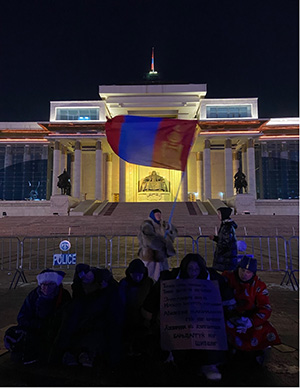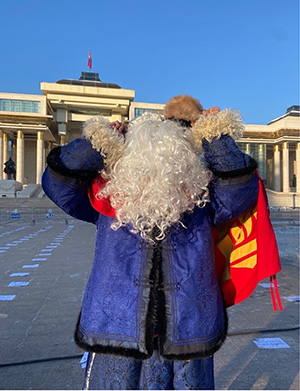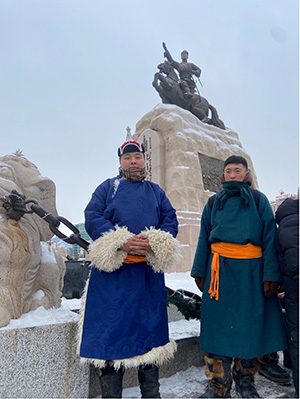Fieldwork
Fashion and Resistance: Dressing and Undressing as Political Protest in Mongolia’s Social Movements
Mongolia had an unusual year in 2022. Sukhbaatar Square, Mongolia’s central square in front of the Government House, became the stage of two large demonstrations: the 'Do Your Job' protest in April and the protest against 'Coal Thief' in December. During these protests, a number of shocking incidents occurred such as self-immolation, hunger strikes, attempts to occupy government buildings, and undressing. The most recent ‘Coal Thief’ protest was more intense and lasted longer than previous demonstrations, for 46 days. On the first day of the protest, when there were only one hundred people in the street, two young men undressed themselves in the freezing cold. On Facebook, journalists and other live broadcasters shared live videos of their actions. The square was filled with thousands of protestors the following day. In the 2022 protests, many marched in traditional Mongolian costume (deel), while a few undressed themselves in the bitter cold. What significance do clothing and undressing have in Mongolian political protest? I seek to explore the relationship between clothes and the body when it comes to political resistance, and how Mongolian protestors tell us who they are in the world, with and without clothes.
A group of remaining 'determined fighters' is on strike in front of the Government Palace. They wear warm deels and one protestor in a pink deel and fury overcoat holds the national flag.
The 21-year-old Dashnyam played one of the leading roles during the ‘Coal Thief’ protest. This photo was taken after he returned to the square after 10 days of medical treatment in the hospital. He got ill from staying outside in the square for 10 days. He wears a blue sheepskin deel, an overcoat, and a national flag. As for the Santa Claus beard, before coming to the square he organized a New Year’s gifting event for children in the ger (yurt) district area of Ulaanbaatar city).
Enkhtaivan, 24, is one of the sit-in protestors. In this photo, he wears a blue sheepskin deel and a Janjin (general of an army) hat. As he stands in front of Sükhbaatar's statue, he resembles the revolutionary hero General (Janjin) Sükhbaatar.



